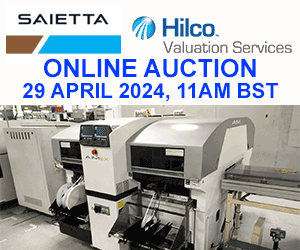AMUG 2019 – Is Additive Manufacturing Ready for Industrialization?
By Philip Stoten
I’ve spent much of is week at the Additive Manufacturing Users Group in downtown Chicago along with thousands of executives, innovators, users and experts from that industry. Whilst I can’t help but be impressed by what I’ve seen in terms of technology, you do have to ask the question is it ready for industry? And if it is not ready now, then when?
As I’ve said in the past, I am a big fan of Additive Manufacturing and all it has to offer users and the industries in which it currently operates and those it will disrupt in the future. But to fulfil that potential there are a few things that need to happen to turn this ‘slightly nerdy’ sector into a real industrial reality.
Come out of the shadows
I loved what I saw and heard at AMUG, but let’s see and hear about Additive Manufacturing at some of the major industrial shows, like APEX and Productronica. Right now, it feels like Additive people are talking to Additive people and not to those in the front line of manufacturing. Yes, some large contract manufacturers are taking Additive very seriously, but looking at Additive as one of our many tools for better manufacturing and particularly for the smart factories of the future is essential. That thinking will have to become mainstream.
I’d like to see more Additive companies taking part in conferences in other manufacturing sectors and sharing their vision of the role of their processes in the established world of manufacturing. Additive is a digitally native, it fits perfectly into the Industry 4.0 landscape.
Fitting in
For Additive Manufacturing to succeed in, say the EMS industry, it will need to play nicely with all the other machines, the software applications being used and the supply chain. This is the ecosystem play. Additive Manufacturing is the new kid in the class right now, he’s smart, some might say nerdy, but he’s struggling to make friends.
Phase one of the integration of Additive Manufacturing into the mainstream is communicating. Start talking and opening-up and you’ll make some new friends, learn a little and even teach a few people about why you’re there and the value you bring! The EMS industry is going through its own connectivity issues right now, but everyone agrees connectivity is the foundation of smart manufacturing, so getting it fixed will happen, and Additive should be part of that and part of a connected manufacturing ecosystem.
Next up is being part of a line. Right now, 3D Printers seem isolated solutions, perhaps in a development, tooling or prototype area. To be on the factory floor they will need to be a valued and active part of the community, connecting to and working with other systems, like automation solutions and inspection systems that measure thermal, mechanical and physical properties.
In the EMS sector, like the semiconductor industry, we tend to think in lines. Additive Manufacturing needs to find its place on the line and have the feeders in front of it and the inspection machine around it. Traceability is now table-stakes for manufacturing and at a parts level, so data from these inspection machines will be a barrier to entry if it is not readily available and easily connected.
Economics
This really is the elephant in the room! Additive needs to be cheaper to compete, it’s as simple as that. Whilst building cheaper machines is important that’s not the whole story, not even the crux, the real issue is materials.
A semiconductor manufacturing line is a billion-dollar investment and SMT lines cost millions, so a $100,000 machine is not such a big deal, particularly if it offers benefits like speed to market, or greater line utilization. What is an issue is the viability of printed parts in anything but low volume if the materials are many times more expensive that traditional materials.
There are some fabulous companies developing some amazing materials and some great partnerships between machine makers and major materials makers like BASF, Henkel and the like. The materials they are producing have great properties and address real needs, making the parts produced on 3D printers viable in terms of mechanical properties, and manufacturing performance. However, the price of materials is out of whack. Cheaper materials from a solid supply chain will be a game changer for the sector and will drive much greater adoption.
Education is key
I find myself in two camps. I love Additive Manufacturing and the potential it offers. I also have decades of experience in the EMS world and lots of friends, colleagues and contacts in the industry, most of whom are unsure about the potential of Additive Manufacturing in their world. Indeed, when I talk to them about Additive Manufacturing some don’t seem to see the potential, some glaze over, many have much more pressing challenges, and most really don’t know what’s available and what they need to consider when designing additive parts, how to select materials or even what machines are out there.
This is more than a marketing issue, it’s an education issue. The additive world need to educate industry and the EMS sector would be a great place to start. Additive Manufacturing has numerous applications in the innovation, design, prototype, production and even after market services for consumer and industrial electronics. The sectors just need to converge in a meaningful way.
So, it’s time for the nerdy kid to stand up at the front of the class and tell us about the cool stuff he has developed and share it with the rest of the class. The kid will probably be surprised how many new friends he makes and how popular he becomes!












